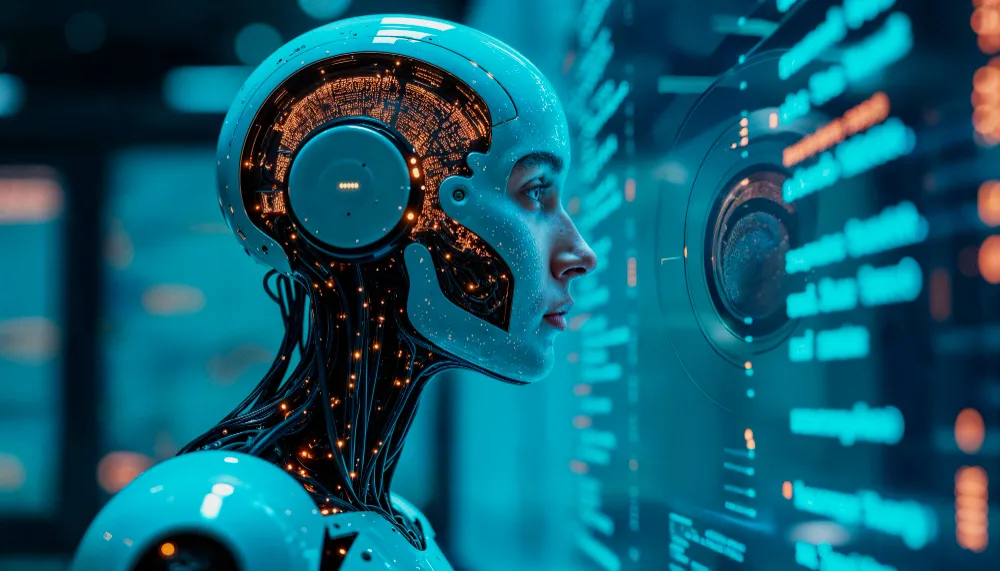You already know that machine learning can revolutionize your business, but every time you dive in, you hit the same wall: scattered spreadsheets, algorithms that underperform, and dashboards that deliver more noise than insight. It’s frustrating and expensive.

What if, instead of treating ML like a black-box experiment, you saw it as a repeatable journey with clear milestones? This is where the machine learning lifecycle comes into play. It’s not just a technical routine- it’s the foundation for reliable, scalable, and impactful machine learning solutions.
In this blog, we uncover the seven pivotal stages of the machine learning lifecycle. Whether you are planning your first ML project or scaling existing ones, understanding these stages will equip you to build solutions that align with business goals, and drive real results.
A Closer Look at the 7 Stages of Machine Learning Lifecycle
Machine learning isn’t just about feeding data into an algorithm, it’s a structured journey. Now, we’ll walk through the seven essential stages that turn raw data into intelligent, deployable models. Each stage plays a crucial role in building scalable ML solutions.

1. Data Collection: The Starting Point of Intelligence
All machine learning endeavors start with one single aspect- data. A machine is unable to learn without data, and the most efficient algorithm cannot succeed without appropriate data. Collecting data involves collecting related, high-quality information that mirrors the issue you wish to address. Whether from sensors, user engagement, monetary records, or publicly available datasets, the data has to be vast and representative.
Relevance and richness of gathered data pave the way for all that follows. But raw data is not always perfect- it is filled with inconsistencies, missing values, or irrelevant entries most of the time. This naturally leads to the next crucial phase in the machine learning lifecycle and forms the foundation for building an ML model.
2. Data Preparation: Organizing and Refining Data for Insights
After data has been gathered, it needs to be cleaned. Data preparation is where the raw, unorganized input starts to organize itself. It is a step that entails cleaning the dataset- eliminating duplicates, dealing with missing values, correcting errors, and transforming unstructured formats into a structured format in a form appropriate for analysis.
Data preparation ensures that the input is clean and meaningful, allowing the machine learning model to learn signals rather than noise. This step is essential for progressing through the stages of machine learning, as it lays a strong data foundation for the upcoming phases in the ML lifecycle.
3. Data Splitting: Into Train, Tune, and Test
With the data cleaned and enriched now, the next step is to split it into separate parts- usually into training, validation, and test sets. Each dataset plays a distinct role in building an ML model:
- The model uses the training set as a basis to detect and learn patterns within the data.
- The validation set is used to adjust parameters and prevent overfitting.
- The test set provides an unbiased evaluation of the model’s final performance.
Breaking up the data into subsets allows objective measurement at every step so that development improvements translate into generalizable results. This stage is essential in the ML lifecycle, assessing how well various model types and versions perform.
4. Model Selection: Choosing the Correct Path for Learning
Each machine learning problem involves selecting an optimal model, and that is where it all starts with deciding what type of learning is involved. Whether the issue belongs to supervised, unsupervised, semi-supervised, or reinforcement learning, the types of machine learning lay the groundwork for choosing algorithms.
After the type of learning is established, a proper algorithm must be selected, from decision trees and support vector machines to neural networks or ensembles. Depending on the complexity of the problem, the characteristics of the data, and what output is being sought, such a selection has to be made.
Selecting the appropriate model is a central choice in the phases of machine learning and assumes a determinate role in ML model development that succeeds.
5. Model Training: Allowing the Machine to Learn
This is the stage in the ML cycle where the model begins to understand patterns through the provided data. The training dataset is used to help the machine learning model identify patterns and understand the relationships between input features and their corresponding outcomes. In repeated iterations, the algorithm tweaks its internal parameters to reduce prediction errors using techniques such as gradient descent.
This is an iterative and occasionally resource-intensive process that includes choosing hyperparameters, specifying loss functions, and selecting optimization methods. Model training lays the groundwork for performance, but without evaluation, one can’t possibly know how well it is performing.
That is why, after training is finished, it moves into the next critical checkpoint: model evaluation, another critical step in the machine learning process.
6. Model Evaluation: Measuring Performance and Readiness
Model evaluation is not metrics alone, it’s about trust. It determines: Can this machine learning model be trusted to work in the real world?
The validation and test datasets are used to compare the model’s predictions against actual results, helping assess accuracy and generalization. Evaluation measures like accuracy, precision, recall, F1 score, and mean squared error show how well the model recognizes patterns, but more so, how well it generalizes.
If performance falls short, the team may revisit earlier stages- modifying features, selecting different algorithms, or retraining with adjusted hyperparameters. Model evaluation ensures that your efforts in the stages of machine learning lead to a model that performs as expected in real-world conditions.
When the model consistently performs well, it’s ready for the final phase of the machine learning lifecycle: deployment.
7. Model Deployment: Making the Model Operational

Deployment is where all the planning, designing, training, and testing are put into action. In this phase, the machine learning model is deployed into a production environment where it begins making predictions on real-time data.
Deployment can be done in various ways- integrating the model into web applications, hosting it through APIs, or integrating it into business workflows. Also, monitoring software is used to track performance over time, detect model drift, and ensure the model’s reliability.
This last step completes the machine learning stages, but in practice, it marks the start of ongoing improvement and ML model creation. Real-world data changes over time, and the model must continuously adjust, completing the ML cycle through regular data intake and retraining.
Conclusion
The process of building a machine learning model is more than just writing code, it is a thoughtful journey that spans data, algorithms, testing, and real-world application. Each stage in the machine learning lifecycle connects to the next, forming a chain where strength lies in cohesion and careful execution.
In Softude, this comprehensive and stage-based machine learning development process ensures that machine learning solutions not only meet the technical requirements but are also matched with user and business needs. At every level, from data to deployment, decisions are made for clarity, efficiency, and delivering value through machine learning.
Whether you are beginning a new project or growing an existing one, knowing these machine learning stages and using a systematic process of ML model building is the path to long-term success.
Let’s talk about how our systematic, value-based approach to machine learning can make your business smarter. Let’s build smarter together!



